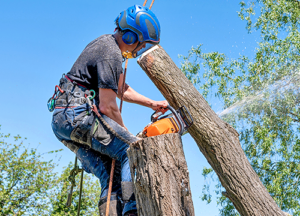The right attorney can help you secure maximum compensation for your injuries. They have the knowledge, resources and track record of success to build a strong case.

They understand trucking regulations and liability issues that are specific to this type of case. They also have the ability to gather evidence and prove a truck driver breached their duty of care, which led to your accident and damages. Contact Utah Injury Pros for professional help.
A truck accident lawyer with in-depth knowledge of the trucking industry can help build a strong case against negligent parties. These attorneys know the regulations governing driver fatigue, vehicle maintenance, cargo loading, and more. They are also familiar with federal and state safety laws and how they apply to specific cases. This allows them to identify violations and use them as evidence of negligence or wrongdoing.
A skilled truck accident lawyer is also well-versed in the specifics of calculating damages for victims. These damages are divided into categories such as pain and suffering, medical expenses, lost wages, property damage, and more. A knowledgeable attorney can work with your doctor to calculate the full extent of your injuries and losses. They will then negotiate with insurance companies to ensure that you receive fair compensation for your claim.
Specialized truck accident lawyers prioritize the rights and well-being of their clients. They serve as compassionate allies for victims and their families, providing them with support throughout the legal process. They can also help with ongoing medical treatment, negotiating disability benefits, and addressing any lingering legal issues.
In addition to their extensive experience in trucking accidents, specialized lawyers have access to a network of experts who can assist with investigations and case preparation. They also have the ability to effectively communicate with their clients, providing them with thorough updates and translating complex legal terms into layman’s terms. Many law firms feature client testimonials on their websites, which can be a helpful resource when vetting potential attorneys. However, be aware that these testimonials are typically selected by the firm and may not represent a complete picture of the attorney’s capabilities.
When selecting a truck accident lawyer, choose one who has experience handling similar cases and a track record of success. Look for a firm that offers free consultations and a no-win, no fee policy. In addition, look for testimonials from previous clients and check out third party reviews to get a more accurate idea of the quality of a lawyer’s services.
Strong communication skills
A skillful truck accident lawyer will have strong communication skills to conduct a thorough investigation. This involves listening attentively to clients, asking questions when necessary, and educating them on the legal process. These skills can be honed by participating in training and professional development activities. In addition, a truck accident lawyer should be able to communicate with clarity and conciseness, which is important for building strong client-lawyer relationships.
The ability to find and analyze evidence is also important for a truck accident attorney. This includes examining medical records, police reports, and other sources of information. They should be able to identify any inconsistencies and discover new evidence that could impact the case. They should be able to determine which parties are liable and build a solid claim against them. For example, they might uncover violations of federal regulations on truck maintenance schedules, which can contribute to accidents.
They will also collect witness statements and review the scene of the crash. They will look for any security cameras at the scene, which can help to prove what happened. They will also request any data from the vehicle’s black box, which contains valuable information about how and why the crash occurred. This can be used to recreate the collision and show the negligence of the truck driver.
Lastly, they will collect any medical bills and documentation that shows the financial burden that the injury has imposed on you. This will include proof of lost wages, rehabilitative costs, and other related expenses. In addition, they will collect all relevant documents regarding any pre-existing conditions that may have been aggravated by the crash.
Ideally, they will be able to settle the case out of court, which saves you time and money. However, they should be prepared to take the case to trial, if necessary. They should be persistent and assertive when dealing with insurance companies. They should also be willing to fight for you in the courtroom and have the presence and confidence to present a strong case before a judge or jury. They should also be familiar with the tactics employed by trucking companies in their attempts to avoid paying out claims.
Ability to conduct a thorough investigation
A truck accident lawyer’s ability to conduct a thorough investigation is key to building a strong case. Their investigations involve gathering evidence, examining medical records and accident reports, and analyzing expert testimonies. They also have to be able to work under tight deadlines.
The first step in a truck accident case is to gather as much evidence as possible, including witness testimony, photos of the crash site, and police reports. The lawyer will also look at the driver’s history, including past accidents and any violations of federal regulations such as hours of service or weight limits. A thorough investigation will reveal any negligence on the part of the trucking company or driver, and help establish liability.
An effective truck accident attorney will also conduct an analysis of the crash site, including skid marks and vehicle placements. They will also consult with experts in trucking safety, such as accident reconstruction specialists and physicians who can provide insight into the cause of the crash and the extent of the injuries sustained.
They will also review documentation from the trucking company and insurance providers, including insurance policies and accident reports. They will assess the impact of the accident on their client’s life, including physical, emotional, and financial damages, and use this information to negotiate with insurance companies for a fair settlement.
Trucking companies and their insurers are notorious for trying to lowball victims, so a skilled truck accident lawyer will know how to counter these tactics. They will analyze the evidence collected and present it in a compelling way to convince insurance adjusters that their client deserves a fair settlement. If negotiations fail, they will be prepared to take the case to court. This requires a level of skill and attention to detail that not every attorney can offer. The best truck accident lawyers are well-versed in the laws that govern these cases and have a proven track record of success. They will take the stress and pressure off of their clients, helping them navigate a complicated legal process and achieve the justice they deserve.
Strong negotiation skills
Truck accidents are devastating for victims, both physically and emotionally. The process of recovery is complex and requires an expert legal team. Look for a truck accident lawyer with a solid track record of winning compensation for their clients, strong negotiation skills and a deep understanding of state and federal trucking regulations. They should also be able to provide a clear explanation of how they will approach your case.
During the consultation, an experienced truck accident attorney will review the facts of your case and explain your rights. They will then begin to conduct a thorough investigation. This includes examining police reports, witness statements, eyewitness accounts and any available video footage of the crash. In addition, they will have access to a network of experts, including accident reconstruction specialists, medical professionals and vocational experts. This network will allow them to gather evidence and identify all liable parties in your case.
A skilled truck accident lawyer is a powerful advocate who will work tirelessly to secure the maximum compensation for your losses. They understand the tactics used by insurance companies to minimize payouts and will fight aggressively to ensure you receive fair compensation for your injuries and damages.
The first step in proving liability for a truck accident is establishing negligence on the part of the truck driver or trucking company. An experienced truck accident lawyer can use their knowledge of industry standards to identify areas of potential negligence such as inadequate training, improper hiring practices, negligent oversight and faulty maintenance. They can then use these findings to build a compelling argument in negotiations and trial proceedings.
A truck accident lawyer with strong negotiation skills can help you obtain a more favorable settlement in your case without the need for a lengthy trial. During settlement meetings, the lawyer will negotiate with insurance representatives and will be able to counteract any attempts by the insurer to undervalue your claim. This can save you time and money and allow you to move on with your life. Inquire about the lawyer’s track record and their ability to negotiate in a timely manner, as well as their reputation among peers and the industry.








